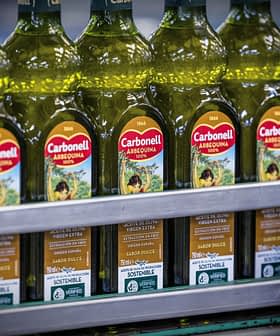
The Mediterranean Agronomic Institute of Saragossa (IAMZ-CIHEAM) and the International Olive Council (IOC) will organize between November 26th and 28th a seminar on the Present and Future of the Mediterranean Olive Sector.
The conference, whose last date for entries is November 15th, will last two days with presentations and scientific and technical discussions structured in three sessions. There will be roundtables with case studies and technical visits to Aragon to learn about the traditional and the modern PDOs and the intensive mill system.
The organizers have reported that the seminar will explore the future of olive farming in the Mediterranean, trying to answer questions like:
- Are intensive production systems sustainable?
- Will the future olive oil sector be based on these systems, or will it maintain traditional systems?
- What are the factors which have to be improved in processing technologies, especially in countries where a large part of their production cannot access markets which require strict attention to quality?
.
Besides the already widespread nutritional and functional properties of olive products, the seminar will also focus on the raw material for the “nutraceutical” (nutrition and pharmaceutical) industry and the keys to opening new markets and increase its presence in the already consolidated ones.
Olive cultivation is a key element of Mediterranean agriculture. According to the IOC figures, nearly 3.3 million tons of olive oil were produced worldwide in the campaign 2011/12, of which 97 percent corresponds to the Mediterranean region.
The production of olive oil and table olives has been increasing in a spectacular way in recent decades, more than doubling for olive oil and a 270 percent increase for table olives.
This increase is due in part to the establishment of plantations using intensive production systems which have achieved high yields and a strong degree of mechanization.
European Union subsidies have also played a decisive role in this production increase, as the largest climbs have occurred in the Mediterranean countries of the EU.
The consumption of olive products has followed the same trend. The Mediterranean region has the largest number of consumers, while other major countries such as U.S., Brazil, Australia, and Canada are becoming major consumers and importers.
Mediterranean Agronomic Institute of Saragossa
Mercacei articles also appear in Mercacei magazine and are not edited by Olive Oil Times.








